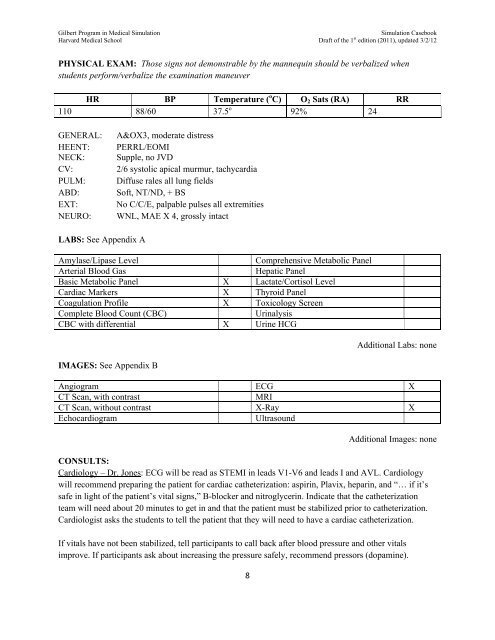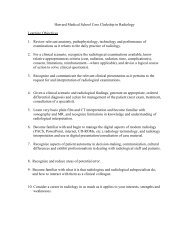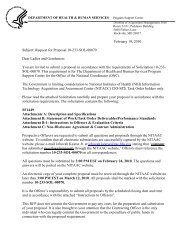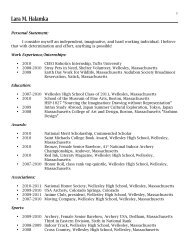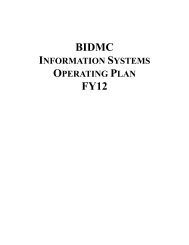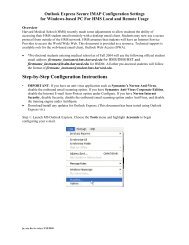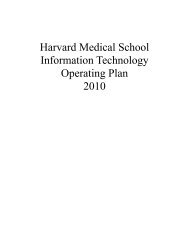SIMULATION CASEBOOK - MyCourses
SIMULATION CASEBOOK - MyCourses
SIMULATION CASEBOOK - MyCourses
Create successful ePaper yourself
Turn your PDF publications into a flip-book with our unique Google optimized e-Paper software.
Gilbert Program in Medical Simulation<br />
Simulation Casebook<br />
Harvard Medical School Draft of the 1 st edition (2011), updated 3/2/12<br />
PHYSICAL EXAM: Those signs not demonstrable by the mannequin should be verbalized when<br />
students perform/verbalize the examination maneuver<br />
HR BP Temperature ( o C) O 2 Sats (RA) RR<br />
110 88/60 37.5 o 92% 24<br />
GENERAL:<br />
HEENT:<br />
NECK:<br />
CV:<br />
PULM:<br />
ABD:<br />
EXT:<br />
NEURO:<br />
A&OX3, moderate distress<br />
PERRL/EOMI<br />
Supple, no JVD<br />
2/6 systolic apical murmur, tachycardia<br />
Diffuse rales all lung fields<br />
Soft, NT/ND, + BS<br />
No C/C/E, palpable pulses all extremities<br />
WNL, MAE X 4, grossly intact<br />
LABS: See Appendix A<br />
Amylase/Lipase Level<br />
Comprehensive Metabolic Panel<br />
Arterial Blood Gas<br />
Hepatic Panel<br />
Basic Metabolic Panel X Lactate/Cortisol Level<br />
Cardiac Markers X Thyroid Panel<br />
Coagulation Profile X Toxicology Screen<br />
Complete Blood Count (CBC)<br />
Urinalysis<br />
CBC with differential X Urine HCG<br />
IMAGES: See Appendix B<br />
8<br />
Additional Labs: none<br />
Angiogram ECG X<br />
CT Scan, with contrast<br />
MRI<br />
CT Scan, without contrast X-Ray X<br />
Echocardiogram<br />
Ultrasound<br />
Additional Images: none<br />
CONSULTS:<br />
Cardiology – Dr. Jones: ECG will be read as STEMI in leads V1-V6 and leads I and AVL. Cardiology<br />
will recommend preparing the patient for cardiac catheterization: aspirin, Plavix, heparin, and “… if it’s<br />
safe in light of the patient’s vital signs,” B-blocker and nitroglycerin. Indicate that the catheterization<br />
team will need about 20 minutes to get in and that the patient must be stabilized prior to catheterization.<br />
Cardiologist asks the students to tell the patient that they will need to have a cardiac catheterization.<br />
If vitals have not been stabilized, tell participants to call back after blood pressure and other vitals<br />
improve. If participants ask about increasing the pressure safely, recommend pressors (dopamine).


